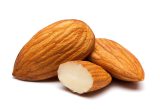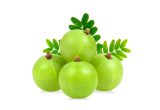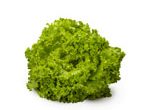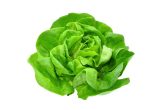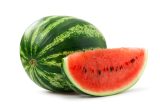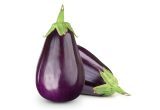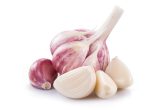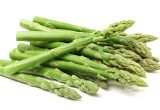Spring onion

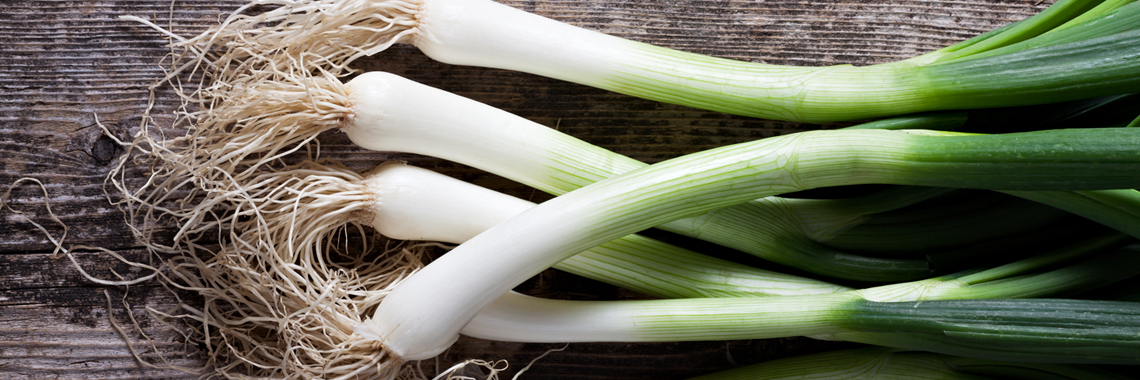
Description
- The onion belongs to the Alliaceae family, genus Allium, species cepa. It is a biennial plant of Central Asian origin (Birlouez, 2016).
PHYSICAL AND ORGANOLEPTIC CHARACTERISTICS
- The spring onion consists of a stem, root, bulb and skin (Green, 1978).
- There are many varieties of onion, differing in colour and stage of ripening.
- The spring onion is a spring vegetable and is eaten at the beginning of its formation.
- It can be eaten raw or cooked. It adds a sweet note to salads.
- The skin of the spring onion is white and the stems are green.
- The growth of spring onions and the size of their bulbs increase proportionally with the increase in cultivation temperature (Ikeda, 2019).
COMPOSITION CHARACTERISTICS (excluding macronutrients, vitamins and minerals)
- Spring onion contains a significant amount of flavonoids (including quercetin), polyphenols with antioxidant properties (Aslam, 2017)
- One study showed that extracts of spring onion were effective in the treatment of cardiovascular disease, obesity, high cholesterol, type 2 diabetes and hypertension. Thanks to their thiosulphate content, hypocholesterolemic, hypolipidemic, antihypertensive, antidiabetic, antithrombotic and antihyperhocysteinemic effects are found (Lanzotti, 2006; Corzo-Martínez, 2007).
SAUTÉED
The following values are approximate and depend on variety, season, ripeness, cultivation conditions, etc.
Sautéed spring onion is low in energy*, as it provides an average of 27.60 calories (kcal) per 100 g, i.e. 115 kJ.
COMPOSITION TABLES
For each nutrient, the tables provide information on the content, the minimum and maximum values, as well as the percentage of the Dietary Reference Values (DRVs) for 100 g net of sautéed/fried fresh spring onions, without fat.
*Regulation (EC) No 1924/2006 of the European Parliament and of the Council of 20 December 2006 on nutrition and health claims made on foods.
MACRONUTRIENTS
| Constituent (g) | Average content |
Min-Max per 100g |
DRV% |
|---|---|---|---|
| Water | 91,20 | - | - |
| Fibers | 3,10 | - | - |
| Carbohydrates | 3,56 | - | 1,37 |
| Sugars | 2,80 | - | 3,11 |
| Lipids | 0,30 | - | 0,43 |
| Saturated fat | 0,09 | - | 0,45 |
| Protein | 1,13 | 1,10 - NC | 2,26 |
| Constituent (g) | Amount | Min-Max | DRV% |
|---|---|---|---|
| Water | Ciqual 2020 (valeur issue des analyses Ciqual-Aprifel 2018) | - | - |
| Fibers | Ciqual 2020 (valeur issue des analyses Ciqual-Aprifel 2018) | - | - |
| Carbohydrates | Ciqual 2020 | - | Règlement (UE) N°1169/2011 du parlement Européen et du conseil du 25 octobre 2011 |
| Sugars | Ciqual 2020 (valeur issue des analyses Ciqual-Aprifel 2018) | - | Règlement (UE) N°1169/2011 du parlement Européen et du conseil du 25 octobre 2011 |
| Lipids | Ciqual 2020 (valeur issue des analyses Ciqual-Aprifel 2018) | - | Règlement (UE) N°1169/2011 du parlement Européen et du conseil du 25 octobre 2011 |
| Saturated fat | Ciqual 2020 (valeur issue des analyses Ciqual-Aprifel 2018) | - | Règlement (UE) N°1169/2011 du parlement Européen et du conseil du 25 octobre 2011 |
| Protein | Ciqual 2020 (valeur issue des analyses Ciqual-Aprifel 2018) | - | Règlement (UE) N°1169/2011 du parlement Européen et du conseil du 25 octobre 2011 |
Zoom on carbohydrates
- It provides a quantity of carbohydrates (3.56 g per 100 g) that is lower than the average amount found in cooked vegetables (4.85 g per 100 g).
- These are mainly fructose (1.60 g per 100 g), glucose (0.90 g per 100 g) and sucrose (0.30 g per 100 g).
- Sautéed spring onion is low in sugar* (0.99 g per 100 g) as it contains no more than 5 g per 100 g.
Zoom on fibres
- Sautéed spring onions are a source of fibre* as they provide more than 3 g of fibre per 100 g, i.e. 3.10 g per 100 g.
- This amount is higher than the average quantity found in cooked vegetables (2.89 g per 100 g).
Zoom on proteins
- The amount of protein in sautéed spring onion (1.13 g per 100 g) is lower than the average quantity found in cooked vegetables (2 g per 100 g).
Zoom on lipids
- Sautéed spring onion is fat-free* as it contains less than 0.5 g per 100 g.
*Regulation (EC) No 1924/2006 of the European Parliament and of the Council of 20 December 2006 on nutrition and health claims made on foods.
MINERALS AND TRACE ELEMENTS
| Constituent | Average content |
Min-Max per 100g |
DRV% |
|---|---|---|---|
| Calcium (mg) | 55 | - | 6,88 |
| Chloride (mg) | 28,60 | - | 3,58 |
| Copper (mg) | 0,03 | - | 3 |
| Iron (mg) | 0,85 | - | 6,07 |
| Iodine (µg) | < 20 | - | - |
| Magnesium (mg) | 11 | - | 2,93 |
| Manganese (mg) | 0,36 | - | 18 |
| Phosphorus (mg) | 26 | - | 3,71 |
| Potassium (mg) | 260 | - | 13 |
| Selenium (µg) | < 20 | - | - |
| Sodium (mg) | < 5 | - | - |
| Zinc (mg) | 0,21 | - | 2,10 |
| Constituent | Amount | Min-Max | DRV% |
|---|---|---|---|
| Calcium (mg) | Ciqual 2020 (valeur issue des analyses Ciqual-Aprifel 2018) | - | Règlement (UE) N°1169/2011 du parlement Européen et du conseil du 25 octobre 2011 |
| Chloride (mg) | Ciqual 2020 (valeur issue des analyses Ciqual-Aprifel 2018) | - | Règlement (UE) N°1169/2011 du parlement Européen et du conseil du 25 octobre 2011 |
| Copper (mg) | Ciqual 2020 (valeur issue des analyses Ciqual-Aprifel 2018) | - | Règlement (UE) N°1169/2011 du parlement Européen et du conseil du 25 octobre 2011 |
| Iron (mg) | Ciqual 2020 (valeur issue des analyses Ciqual-Aprifel 2018) | - | Règlement (UE) N°1169/2011 du parlement Européen et du conseil du 25 octobre 2011 |
| Iodine (µg) | Ciqual 2020 (valeur issue des analyses Ciqual-Aprifel 2018) | - | Règlement (UE) N°1169/2011 du parlement Européen et du conseil du 25 octobre 2011 |
| Magnesium (mg) | Ciqual 2020 (valeur issue des analyses Ciqual-Aprifel 2018) | - | Règlement (UE) N°1169/2011 du parlement Européen et du conseil du 25 octobre 2011 |
| Manganese (mg) | Ciqual 2020 (valeur issue des analyses Ciqual-Aprifel 2018) | - | Règlement (UE) N°1169/2011 du parlement Européen et du conseil du 25 octobre 2011 |
| Phosphorus (mg) | Ciqual 2020 (valeur issue des analyses Ciqual-Aprifel 2018) | - | Règlement (UE) N°1169/2011 du parlement Européen et du conseil du 25 octobre 2011 |
| Potassium (mg) | Ciqual 2020 (valeur issue des analyses Ciqual-Aprifel 2018) | - | Règlement (UE) N°1169/2011 du parlement Européen et du conseil du 25 octobre 2011 |
| Selenium (µg) | Ciqual 2020 (valeur issue des analyses Ciqual-Aprifel 2018) | - | Règlement (UE) N°1169/2011 du parlement Européen et du conseil du 25 octobre 2011 |
| Sodium (mg) | Ciqual 2020 (valeur issue des analyses Ciqual-Aprifel 2018) | - | - |
| Zinc (mg) | Ciqual 2020 (valeur issue des analyses Ciqual-Aprifel 2018) | - | Règlement (UE) N°1169/2011 du parlement Européen et du conseil du 25 octobre 2011 |
Zoom on minerals and trace elements
- Sautéed spring onions are a source of manganese with an amount of 0.36 mg per 100 g, representing 18% of DRVs.
- They also provide a significant amount of potassium, equivalent to 13% of DRVs, i.e. 260 mg per 100 g.
- The other minerals and trace elements are present in quantities representing less than 7% of DRVs.
VITAMINS
| Constituent | Average content |
Min-Max per 100g |
DRV% |
|---|---|---|---|
| Provitamin A Beta-carotene (µg) | 137 | - | - |
| Vitamin A equivalent (µg) | 22,83 | - | 2,85 |
| Vitamin B1 (mg) | < 0,015 | - | - |
| Vitamin B2 (mg) | < 0,01 | - | - |
| Vitamin B3 (mg) | 0,41 | - | 2,56 |
| Vitamin B5 (mg) | 0,14 | - | 2,33 |
| Vitamin B6 (mg) | 0,074 | - | 5,29 |
| Vitamin B9 (µg) | 40,50 | - | 20,25 |
| Vitamin C (mg) | 7,38 | - | 9,23 |
| Vitamin E (mg) | < 0,08 | - | - |
| Vitamin K1 (µg) | 4,03 | - | 5,37 |
| Constituent | Amount | Min-Max | DRV% |
|---|---|---|---|
| Provitamin A Beta-carotene (µg) | Ciqual 2020 (valeur issue des analyses Ciqual-Aprifel 2018) | - | - |
| Vitamin A equivalent (µg) | Calcul à partir de la valeur Provitamine A Béta-carotène* | - | Règlement (UE) N°1169/2011 du parlement Européen et du conseil du 25 octobre 2011 |
| Vitamin B1 (mg) | Ciqual 2020 (valeur issue des analyses Ciqual-Aprifel 2018) | - | Règlement (UE) N°1169/2011 du parlement Européen et du conseil du 25 octobre 2011 |
| Vitamin B2 (mg) | Ciqual 2020 (valeur issue des analyses Ciqual-Aprifel 2018) | - | Règlement (UE) N°1169/2011 du parlement Européen et du conseil du 25 octobre 2011 |
| Vitamin B3 (mg) | Ciqual 2020 (valeur issue des analyses Ciqual-Aprifel 2018) | - | Règlement (UE) N°1169/2011 du parlement Européen et du conseil du 25 octobre 2011 |
| Vitamin B5 (mg) | Ciqual 2020 (valeur issue des analyses Ciqual-Aprifel 2018) | - | Règlement (UE) N°1169/2011 du parlement Européen et du conseil du 25 octobre 2011 |
| Vitamin B6 (mg) | Ciqual 2020 (valeur issue des analyses Ciqual-Aprifel 2018) | - | Règlement (UE) N°1169/2011 du parlement Européen et du conseil du 25 octobre 2011 |
| Vitamin B9 (µg) | Ciqual 2020 (valeur issue des analyses Ciqual-Aprifel 2018) | - | Règlement (UE) N°1169/2011 du parlement Européen et du conseil du 25 octobre 2011 |
| Vitamin C (mg) | Ciqual 2020 (valeur issue des analyses Ciqual-Aprifel 2018) | - | Règlement (UE) N°1169/2011 du parlement Européen et du conseil du 25 octobre 2011 |
| Vitamin E (mg) | Ciqual 2020 | - | Règlement (UE) N°1169/2011 du parlement Européen et du conseil du 25 octobre 2011 |
| Vitamin K1 (µg) | Ciqual 2020 (valeur issue des analyses Ciqual-Aprifel 2018) | - | Règlement (UE) N°1169/2011 du parlement Européen et du conseil du 25 octobre 2011 |
Zoom on vitamins
- Sautéed spring onions are a source of vitamin B9 as they provide the equivalent of 20.25% of DRVs, i.e. 40.50 µg per 100 g.
- Sautéed spring onion also provides the equivalent of:
- 9.23% of DRVs for vitamin C, i.e. 7.38 mg per 100 g;
- 5.37% of DRVs for vitamin K1, i.e. 4.03 mg per 100 g;
- 5.29% of DRVs for vitamin B6, i.e. 0.074 mg per 100 g.
- The amount of other vitamins represents less than 3% of DRVs.
*Calculation made: Beta Carotene / 6 + retinol
POLYPHENOLS
Nutrition and health claims
According to the definitions of nutrition claims as set out in Regulation (EC) No 1924/2006 on nutrition and health claims, and in view of the composition of sautéed/fried spring onion without fat, the following claims may be used:
NUTRITION CLAIMS OF SAUTEED SPRING ONION
- Low in energy (100 g of sautéed spring onions provide less than 40 kcal)
- Low in sugar (100 g of sautéed spring onions contain no more than 5 g of sugars)
- Fat-free (100 g of sautéed spring onions contain no more than 0.5 g of fat)
- Source of fibre (100 g of sautéed spring onions provide over 3 g of fibre)
- Source of vitamin B9 (100 g of sautéed spring onions provide more than 15% of DRVs)
- Source of manganese (100 g of sautéed spring onions provide more than 15% of DRVs)
HEALTH CLAIMS (for a consumption of 100 g of sautéed spring onions)
Folates or vitamin B9
- Folates contribute to:
- maternal tissue growth during pregnancy,
- normal amino acid synthesis,
- normal blood formation,
- normal homocysteine metabolism,
- normal psychological function,
- normal function of the immune system,
- reduction of tiredness and fatigue.
- Folates have a role in the process of cell division.
Manganese
- Manganese contributes to:
- normal energy-yielding metabolism,
- maintenance of normal bones,
- normal formation of connective tissues,
- protection of cells from oxidative stress.
References
- Agence nationale de sécurité sanitaire de l’alimentation, de l’environnement et du travail. Table de composition nutritionnelle des aliments Ciqual 2020. Consultée le 27/08/2020 depuis le site internet Ciqual https://ciqual.anses.fr/
- Aslam Z, Akhtar S, Imran M, Nadeem M, Gilani S, Elnasha M,Ahmed E. Antioxidant activity, anti-Inflammatory activities, anti-cancer and chemical composition of spring onion (Allium Fistolisum) extracts. Research Journal of Pharmaceutical, Biological and Chemical Sciences. 2017;8(2):1880-90.
- Birlouez E. Garlic, onion, and other Alliaceae: Historical and cultural approach. Phytothérapie. 2016;14: 141.
- Corzo-Martínez M, Corzo N, Villamiel M. Biological properties of onions and garlic. Trends in Food Science & Technology. 2007;18(12):609-25.
- Green GR, Hodges JL. Method of peeling onions by scalding and cutting. US Patent 1978.
- Ikeda H, KinoshitaT, Yamamoto T, Yamasaki A. Sowing time and temperature influence bulb development in spring-sown onion (Allium cepa L.). Scientia Horticulturae. 2019;244:242-8.
- Lanzotti V. The analysis of onion and garlic. J Chromatogr A. 2016;1112(1-2):3-22.
- Règlement (CE) N° 1924/2006 du Parlement européen et du Conseil du 20 décembre 2006 concernant les allégations nutritionnelles et de santé portant sur les denrées alimentaires.
- Règlement (UE) N°432/2012 de la Commission du 16 mai 2012 établissant une liste des allégations de santé autorisées portant sur les denrées alimentaires, autres que celles faisant référence à la réduction du risque de maladie ainsi qu’au développement et à la santé infantiles.
- Règlement (UE) n°1169/2011 du Parlement européen et du Conseil du 25 octobre 2011 concernant l’information des consommateurs sur les denrées alimentaires, modifiant les règlements (CE) n°1924/2006 et (CE) n°1925/2006 du Parlement européen et de Conseil et abrogeant la directive 87/250/CEE de la Commission, la directive 90/496/CEE du Conseil, la directive 1999/10/CE de la Commission, la directive 200/13/CE du Parlement européen et du Conseil, les directives 2002/67/CE et 2008/5/CE de la Commission et le règlement (CE) n°608/2004 de la Commission.
- Table de composition nutritionnelle des aliments CIQUAL (2020) – via le site internet www.anses.fr, consultée le …




